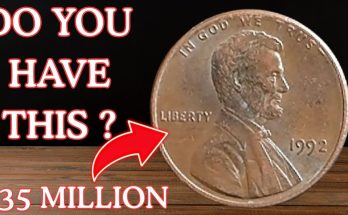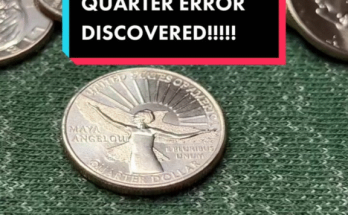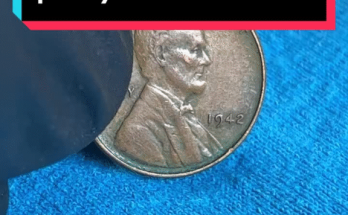Many beginner collectors have numerous questions about how to grade Liberty nickels. Even though the coin evaluation primarily includes a technical examination, it is also necessary to include each piece’s overall eye appeal.
Besides coin condition as a crucial factor, you should also consider possible imperfections that appeared during minting. When you need to rank a circulated specimen on the 70-point Sheldon grading scale, you should also check every, even the tiniest damage on the surface.
Grading Standards
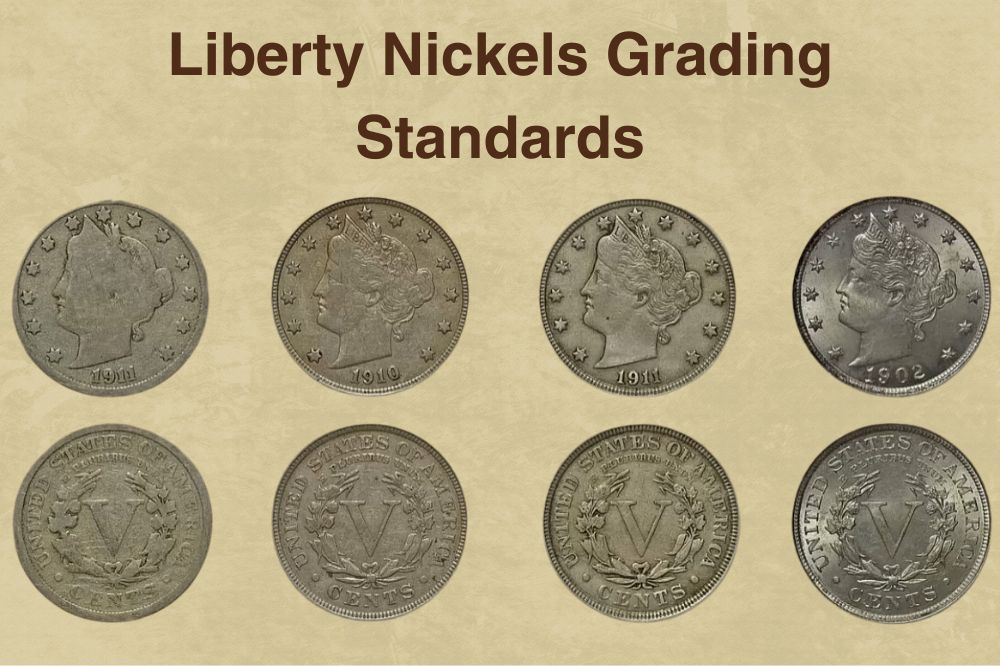
The official American Numismatic Association’s grading standards are mostly based on the Sheldon coin grading scale. It appeared in 1949 when numismatist William Herbert Sheldon decided to rank coins according to particular rules.
He created a 70-point scale that included all coins from the lowest basal grade, marked with the number 1, to those in the mint state, graded with the highest number, 70.
Already in 1953, most collectors agreed that this way of coin evaluation was outdated. However, twenty years passed from that conclusion to the scale’s modernization. In the 1970s, the ANA announced its customization and offered the newly adapted, advanced scale with detailed descriptions of coins in each rank.
It is still in use but with several modifications, adjustments, deletions, and additions. It was necessary mainly because some initially weakly struck coins looked poorly, although they never reached circulation.
Check the Sheldon Coin Grading Scale before reading our grading guide.
Understanding Grades for Liberty Nickels
The Liberty Head nickels are five-cent coins, better known as V-nickels. Their production began in 1883 and lasted until the moment when iconic Buffalo nickels replaced them in 1913.
Interestingly, the designer, Charles Barber, missed to add the denomination on the first coins’ reverse, except for the Roman number V. Thanks to unfortunate similarities to $5 golden coins, these coins offered an opportunity to counterfeit.
After a quick US Mint reaction, Barber re-designed nickels, and pieces with a struck denomination appeared in the second half of the same year. Such a situation made the first specimens rare and collectible despite the overall unpopularity of the series.
Be aware that the V-nickel value is only conditional and depends on detail. The first step in their assessment is to check the stars on the outer edge. You can consider only pieces with good-textured stars and minimal signs of wear and tear collectible. Besides, it is necessary to inspect the date and the V number.
Liberty nickels |
|
| Face value | Five cents ($0.05) |
| Compound | Cupronickel |
| Coin weight | 0.17637 ounces (5 g) |
| Coin diameter | 0.83504 inches (21.2 mm) |
| Coin thickness | 0.07677 inches (1.95 mm) |
Unfortunately, even the best-graded Liberty nickels are often unattractive to collectors. Reasons are poor-looking design, barely visible letters in LIBERTY, and often weak strike.

FREE Appraisal & Sell Your Coins
If you are still unsure about the price of your coins, you can appraise and sell your coins for free through our verified platform.
Experts estimate that only 1% to 2% of all these coins are rated better than GOOD. After all these years of their minting, you can probably complete the entire series for less than $100, except for a few keys, including the most valuable piece from 1885.
How to Grade Liberty Nickels?
Since the V-nickels are often cheap in the lowest collectible grades, most numismatists can accurately judge their condition. Having these coins professionally graded is an unnecessary and unprofitable step. You can do it yourself by following guidelines and watching one of the tutorials on YouTube.
1. About Good (AG)
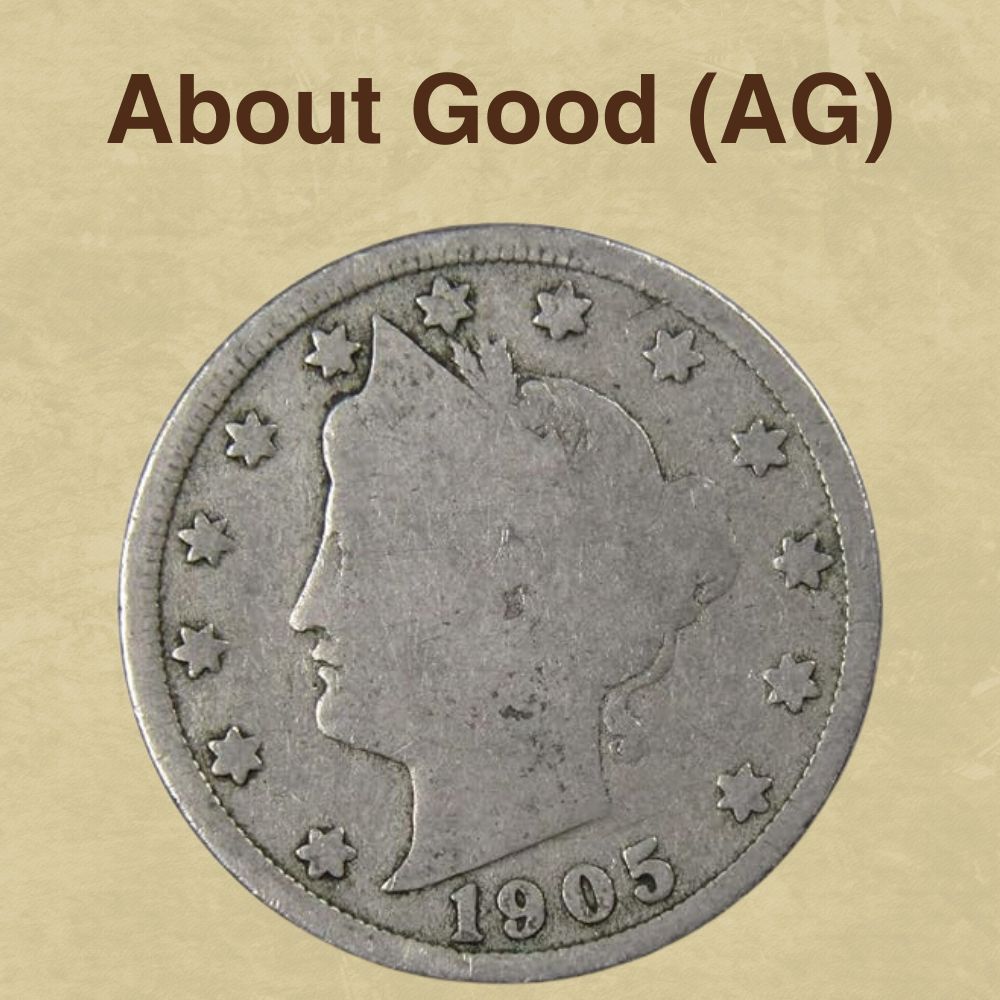
These Liberty nickels are non-collectible for a reason. They are heavily worn out, with barely recognizable designs on both sides.
Obverse
Liberty’s head is only an outline, and most details are invisible. The minting year is readable but weak and often merged with a coin rim.
Reverse
You can see the V number, but it is partially worn away. Other parts of the design are barely visible without any beauty.
2. Good (G, G4, G6)
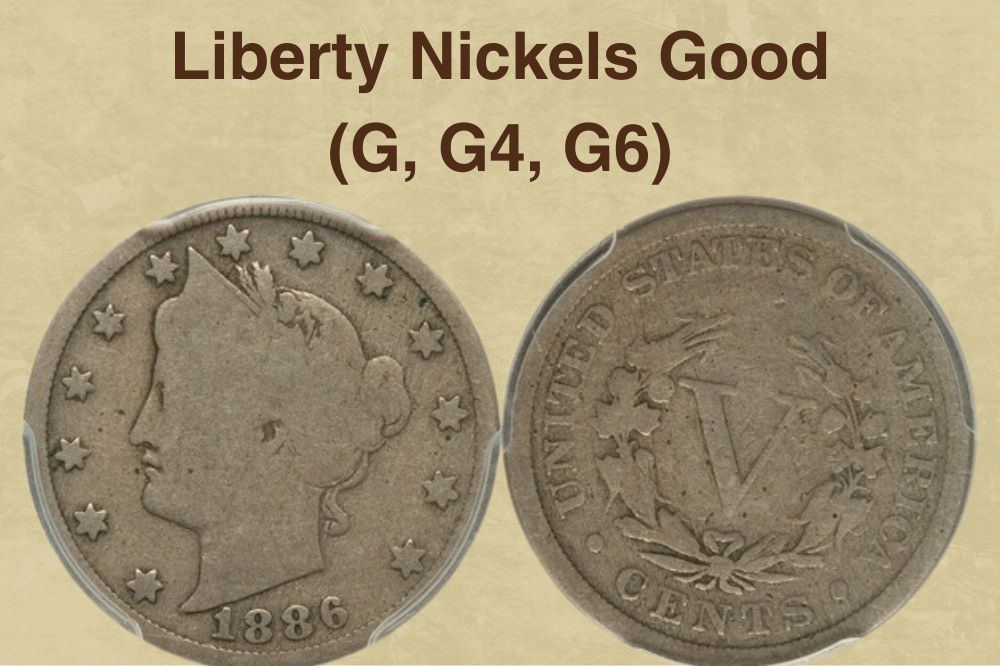
The Liberty nickels in this condition come in two color variations. Collectors appreciate those with a lovely grey color but often avoid pieces with dark charcoal toning. Even though these coins have a full rim, the design is flat.
Obverse
The complete nickel design is worn out, with only a few remaining details. You can see a Lady Liberty portrait outline surrounded by weak but visible and raised stars. The date is readable, although a bit faded.
Reverse
Despite the faded design, you can recognize most details. The entire composition is mostly smooth, with a legend that blends with the rim. The wreath is incompletely outlined and mostly flat.
3. Very Good (VG, VG8, VG10)
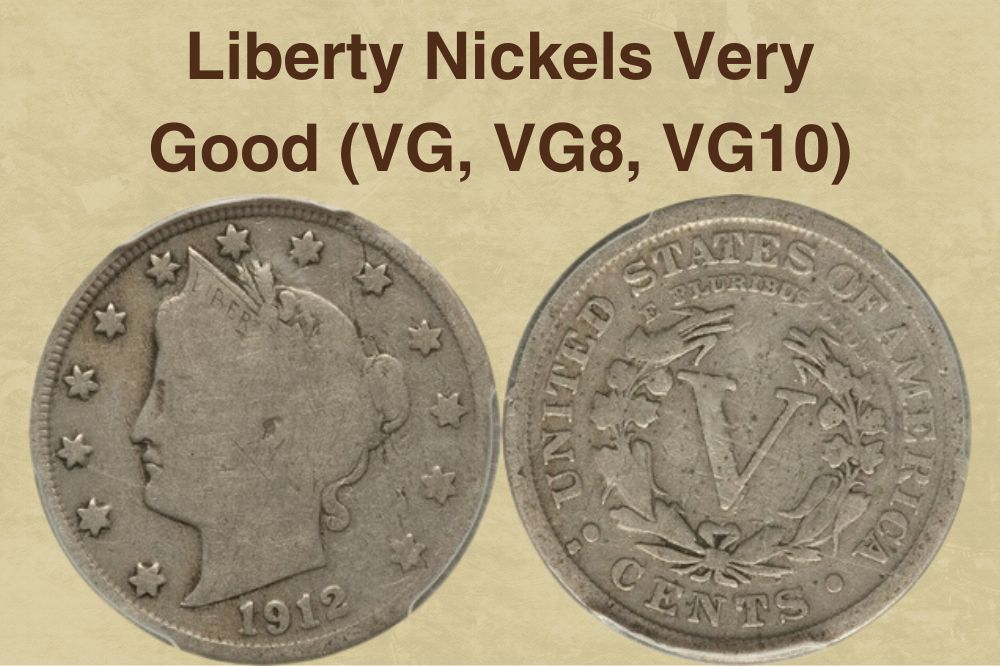
Nickels in this grade must have at least three visible and readable letters in LIBERTY. Without them, it is impossible for a coin to get this ranking despite other features.
Obverse
Besides three visible letters on a headband, you can spot that coronet’s bottom edge and most hair details are flat and smooth. However, the coin rim is always complete in this rank.
Reverse
Inside the full rim is a worn-out composition with readable inscriptions. You can see the boldly outlined wreath and weak letters, particularly those in the motto.

Best Coin Dealer Near Me
Want to Find the best coin dealer near you? Here we can help. (with customer reviews and Rating)
4. Fine (F, F12, F15)
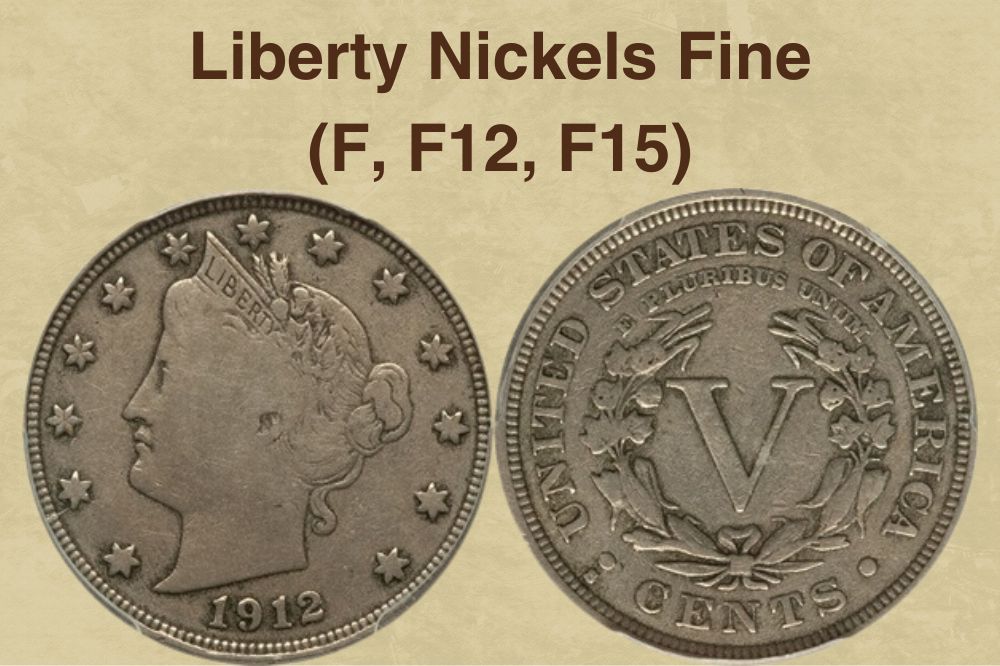
Such graded Liberty nickels show moderate wear but with existing distinct details. Despite numerous imperfections, these specimens are collectible and often sought-after on the market.
Obverse
Even though wear and tear reduced subtle details, creating areas of flatness, such a graded coin has all letters in LIBERTY visible. A headband’s ends and cotton boll details are a bit faded, while Liberty’s hair is mostly smooth.
Reverse
The lettering on this nickel side is effortlessly readable and clear despite partial fading. Wreath details are merged together while distinguishing flat cotton leaves from the stems can be challenging.
5. Very Fine (VF, VF20, VF25, VF30, VF35)
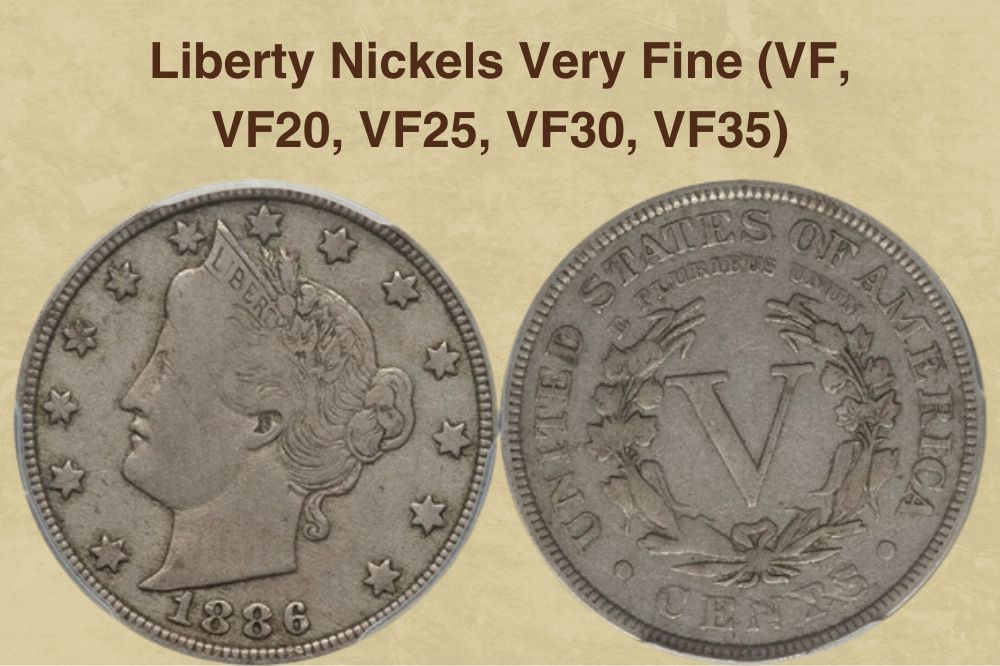
The oldest Liberty Head nickels minted in 1883 are 140 years old, and the last sets appeared 110 years ago. Therefore, most numismatists find specimens graded this way desirable and good enough for their collections.
Obverse
The entire word LIBERTY is readable, and each letter is bold and recognizable. Liberty’s hair shows approximately 50% to 75% of details, while curls are well-defined.
Reverse
Reverse lettering and the V number are readable, and the serrations on the edge are preserved. You can notice that the leaves in the wreath are worn out but with mostly clear lines on the corn cob.
6. Extra Fine (EF40, EF45)
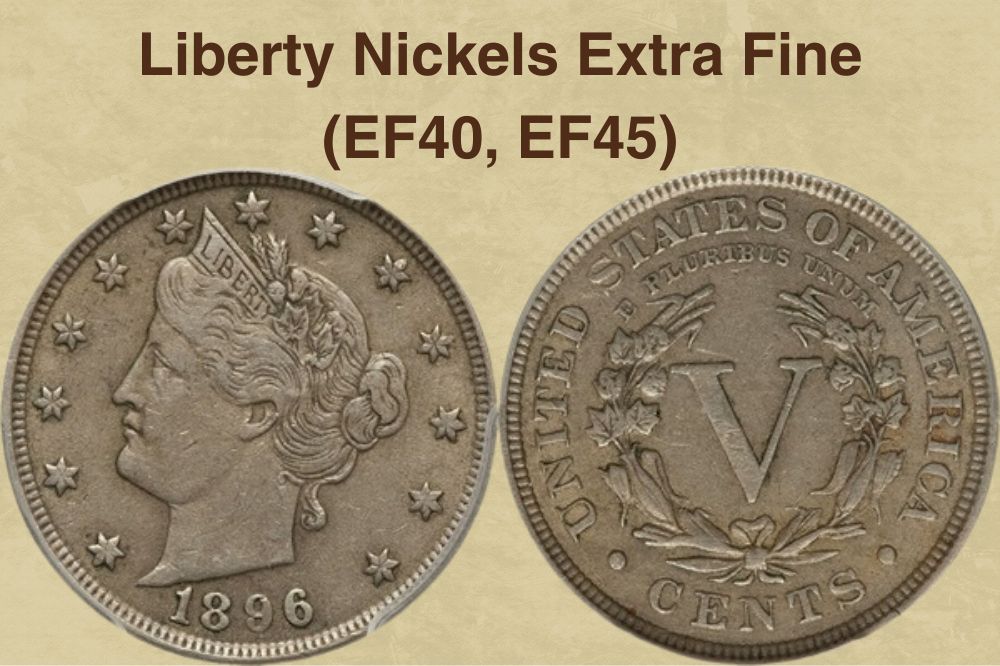
This grade means that the examined Liberty Head nickel circulated for years, resulting in removed luster. Instead, the coin had a soft light grey color and came with worn-out raised high points.
Obverse
You can notice slight wear on hair and cheek high points. Most of the coin surface is still well-detailed, but slight metal removal affects its toning. The date is preserved and sharp, while the coronet has upper and low lines that are bold and clear. Strands of hair are separated in this rank.
Reverse
Letters are more or less sharp and defined, depending on their position, but still in high relief. You can see a wreath with separated maple leaves, corn grains, and cotton bolls. Details on a bow are preserved with a recognizable raised central knot.
7. About Uncirculated (AU50, AU55, AU58)
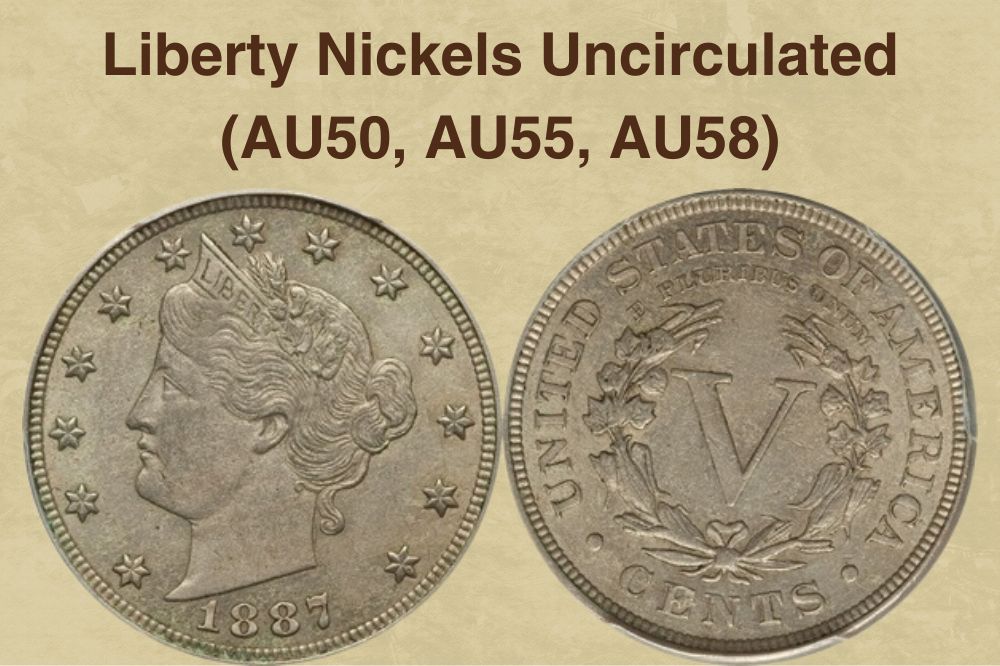

FREE Appraisal & Sell Your Coins
If you are still unsure about the price of your coins, you can appraise and sell your coins for free through our verified platform.
Coins in this grade spent only a limited time in circulation, so most details have stayed well-preserved. You can notice mint luster on their surfaces and rare traces of wear on the highest design points.
Obverse
You can see more or less signs of wear on Liberty’s hair, mainly on the highest points at the forehead and left of her left ear. There is about half of the mint luster on these nickels’ surface.
Reverse
In this case, only light wear is visible on high points, while the lettering is readable and well-defined. The most flattish areas are on corn cobs placed in the wreath.
8. Mint State (from MS60 to MS70)
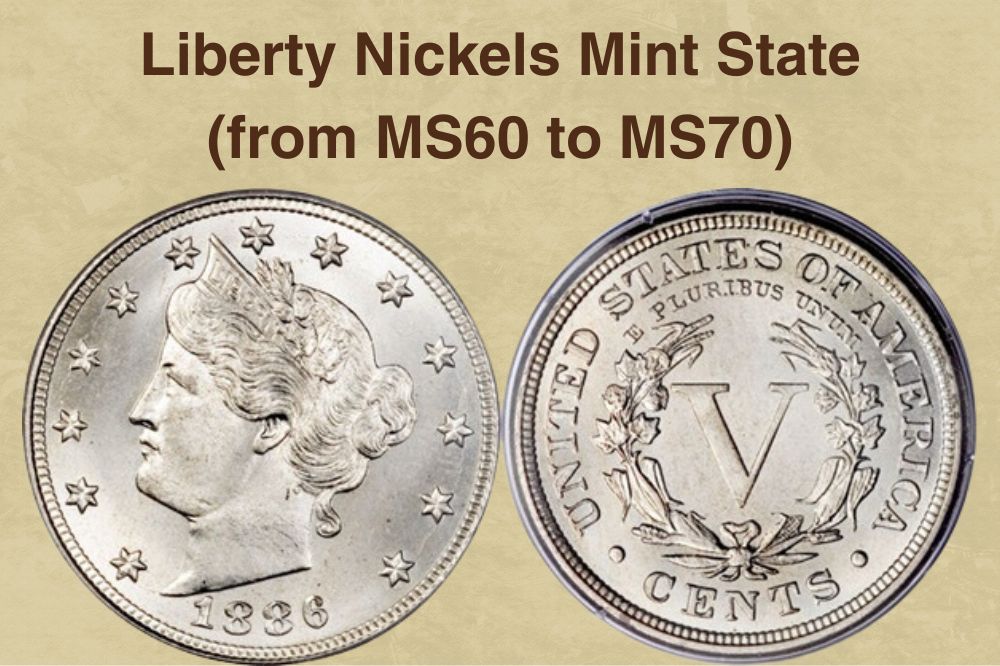
The first thing to see under the light source is one beautiful, high-value, uncirculated coin’s luster. Remember that it is impossible to grade even the best-quality pieces this way after cleaning them with an abrasive agent.
One piece in the mint state never has traces of wear at high points. Fine hair lines above Liberty’s forehead are visible and untouched, while her cheek and neckline are free of wear.
You can also see leaves, wheat stalks, and cotton bolls depicted on the reverse, coming with a rounded profile without signs of smoothing.
MS 60 grade – This coin’s mint luster can look washed out, and you can notice contact marks on its surface. Since Liberty nickels contain copper, such-graded specimen often appears dark, spotted, and sometimes dull.

Best Coin Dealer Near Me
Want to Find the best coin dealer near you? Here we can help. (with customer reviews and Rating)
MS 65 grade – One such highly ranked Liberty nickel comes with the quality struck mint mark and the date.
Surface luster is attractive enough even for the most demanding collectors. You can sometimes spot several tiny contact marks and a patch or two scattered on the design.
MS 67 grade – For now, the highest-quality existing Liberty nickels are in this grade. Their attractiveness and luster are above average, and the most beautiful specimens have kept their original color.
The only imperfections are three to four barely visible contact marks noticeable under a magnifying glass. However, they don’t detract from these coins’ beauty in any way.
Summary
The primary coin grading purpose is to determine their value in the current market. Even though evaluation is not an exact science, trained professionals can assess each piece based on the tiniest detail.
They aim to provide the most accurate description of each specimen and the price range based on its estimated appearance and quality.

